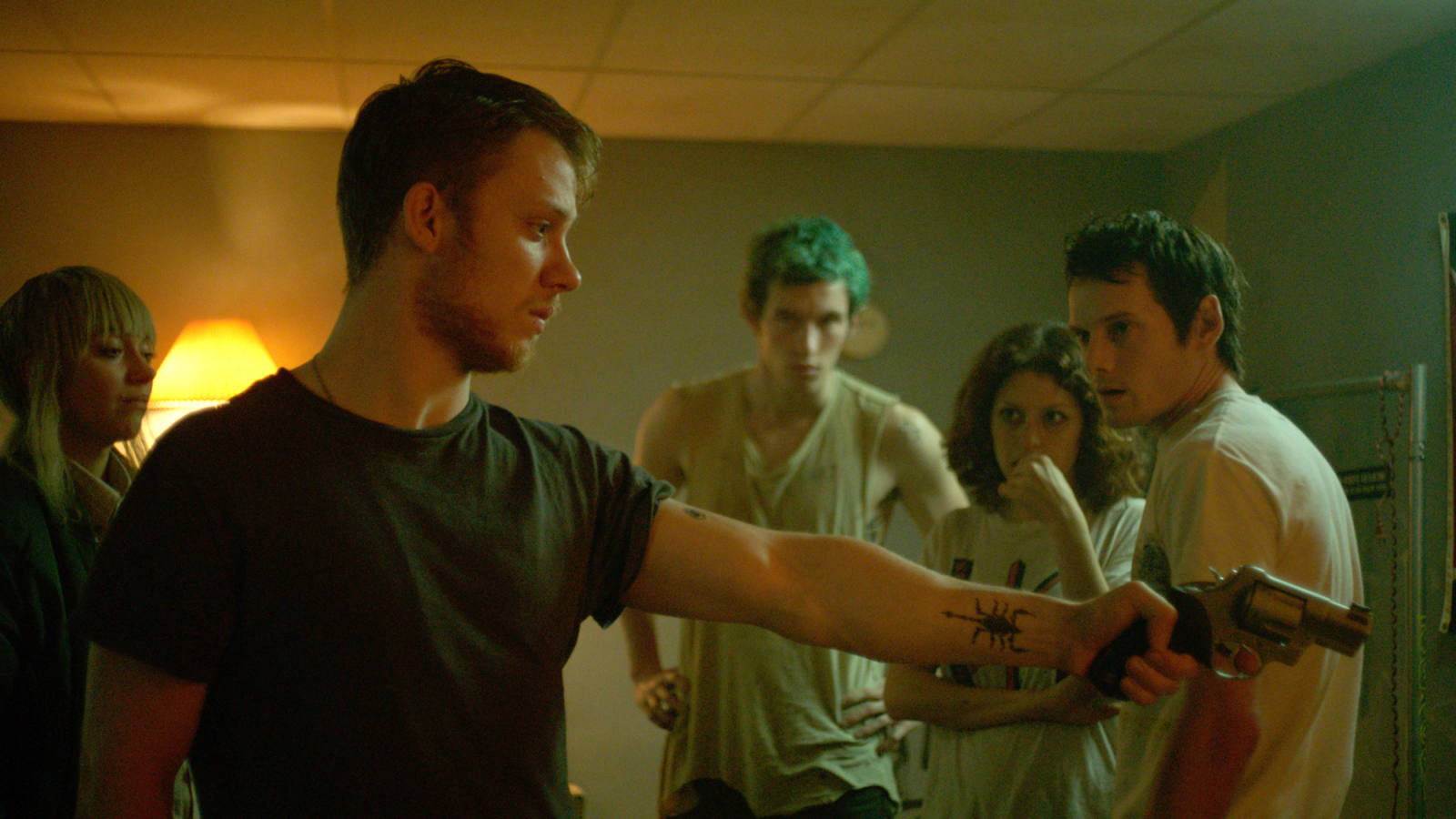REVIEW: 'Green Room' is a well-crafted, unsparing dive into extremism and survival
Sometimes, a movie’s title is more of an accessory than a crucial component. It’s part of the marketing, something that gets changed to suit whichever country the film is being released in (in the Harry Potter series, The Sorcerer’s Stone vs. The Philosopher’s Stone, or more recently, Zootopia vs. Zootropolis). But at other times, a title is incredibly important; it’s a way to better understand the movie and what the filmmakers are trying to say.
The new film Green Room, written and directed by indie up-and-comer Jeremy Saulnier, is a standout example of the latter. On the surface, having the film’s title refer to the backstage area where performers hang out before and after their shows might seem like an odd choice. After all, the film is about an itinerant group of punk rockers who are being held hostage by a group of neo-Nazis in the backwoods of Oregon. Not the most direct connection, right?
The first clue to Saulnier’s thinking is in how the action of the movie gets started. Pat (Anton Yelchin) and his friends Reece (Joe Cole), Sam (Alia Shawkat), and Tiger (Callum Turner) are in the last stages of a shambling tour by their punk band The Ain’t Rights, and find themselves playing one last show at a remote bar. They’re warned ahead of time that the place’s clientele are decidedly “right-wing”, but the band is desperate enough to risk it.
Once there, Pat and his friends are unfortunate enough to witness a violent crime by one of the bar’s employees, leading to a brutal standoff with the bar’s owner Darcy (a rare villainous turn by Patrick Stewart) and his men, centered in the green room. But what Saulnier makes clear is that this is not going to be a triumphant underdog survival story – it’s entirely possible that the bad guys may crush these kids under their red-laced combat boots.
The green room starts off as a jumping-off point for the story, and quickly reveals itself as one of the core pieces of the film’s structure. First, it’s where the band is imprisoned as Darcy and his men devise a strategy to silence the witnesses. Then it becomes a fortress, where Pat and his friends gain a slight advantage over their tormentors. Eventually, it’s a disturbing sort of safe haven, the one place in the building that the rockers are driven back to when their attempts to escape are foiled by the maniacs outside.
Perversely, the green room is still serving its main function. When the band ventures outside the room to square off with the psychos, it stands in for the band going out to perform for an audience. The room continues to be where they retreat between sets to build up the energy to go out again; only instead of a pumped-up audience, they face a gang of killers armed with knives, pitbulls and shotguns.
For anyone who likes to look closely at how films are made, Saulnier’s approach is fascinating. The physical location in a movie doesn’t always figure heavily into the way a movie is put together, and to compare musical performances to bloody life-or-death struggles is an evocative, if extreme, concept. It makes you wonder how many flailing musical acts have often felt that they’d rather go toe-to-toe with a crew of thugs than go out on stage.
If this is indeed Saulnier’s argument, he doesn’t hold back in how he makes it. He uses some vicious material to underscore how dangerous of a situation the band finds itself in. Dog attacks, eviscerations, exploding heads and near-dismemberments are the writer-director’s tools of choice in Green Room, so it’s best to go in with a strong stomach. Saulnier combines this with the same skills for ratcheting up the tension (to almost unbearable levels) that he showed off in Blue Ruin, his critically-acclaimed 2013 feature. Blue Ruin and Green Room suggest that Saulnier isn’t interested in tidy good vs. evil outcomes – he likes stories where everyone shares some guilt and no one is safe.
If the gory visuals sound like a bit of a turn-off, I don’t blame you. More than once, I wondered whether the filmmakers gained anything from one violent image or another. Every so often, though, it can be worth it to experience movies like the ones Saulnier makes. Films like Green Room depict life on the fringes of society, where the extreme emotions and rhythms that give punk rock a lot of its power bleed over into the lives of the characters, where music is compared to combat and a ramshackle room in a dive bar takes on a significance of its own.
Green Room gets three stars out of four.
Have you seen Green Room? If so, what did you think? Are you looking forward to the next Jeremy Saulnier project, or do you think he goes too far? Join the discussion in the comments section, and if you liked this review, share it with your friends and followers!



